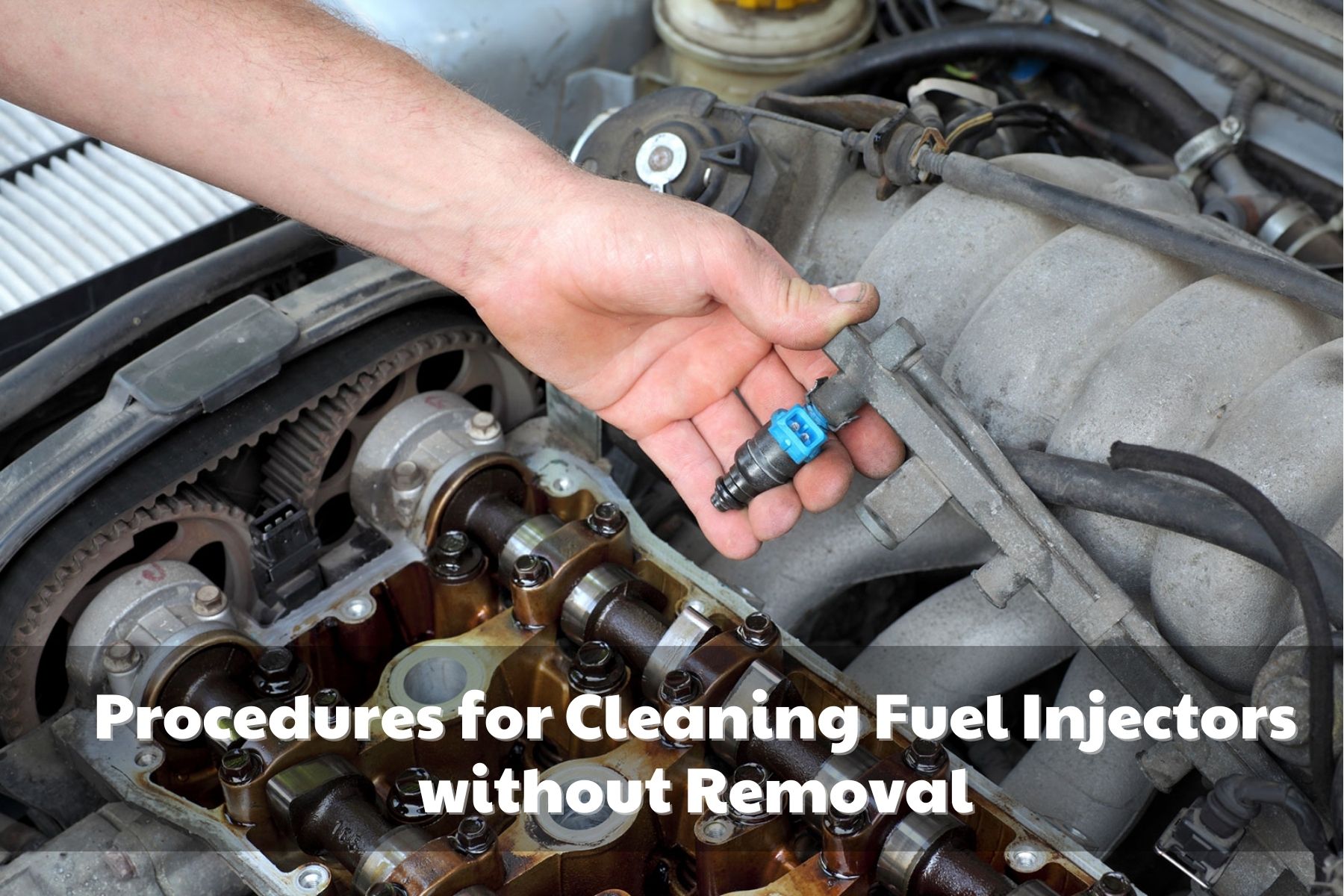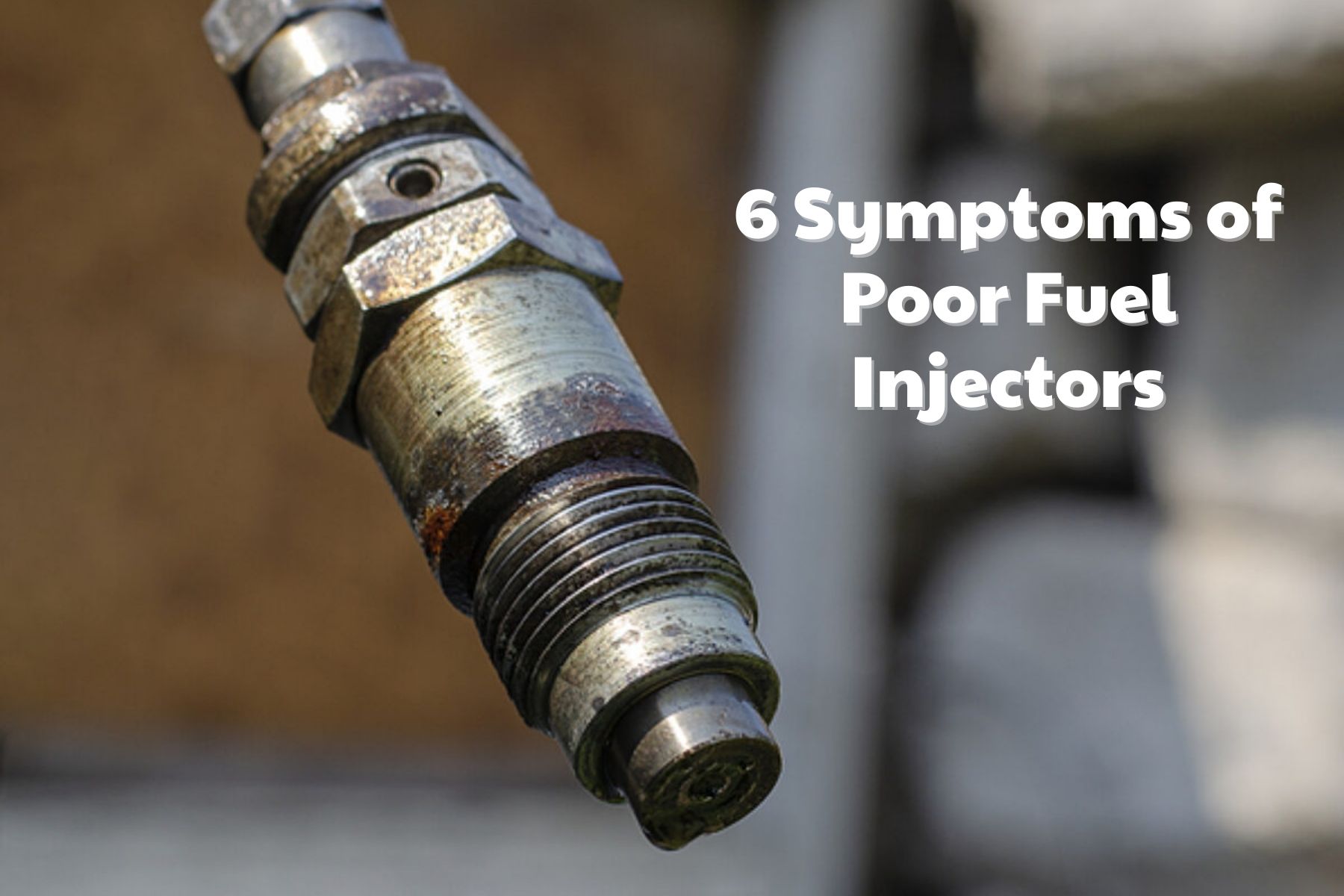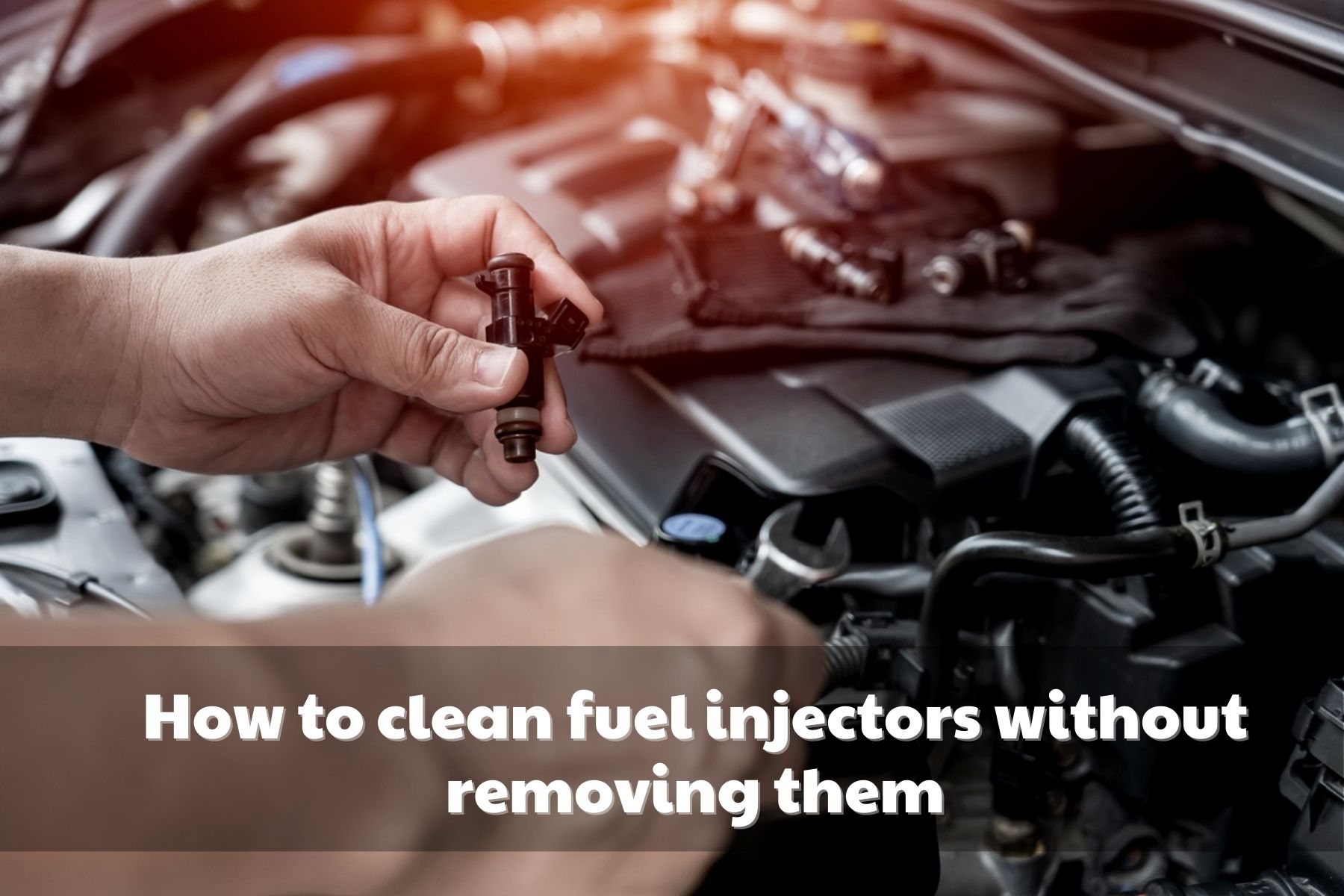Don’t know where to find the answer to the question How to clean fuel injectors without removing them, have a look at our details to get information.
In this blog post, we will discuss how to safely and efficiently clean fuel injectors without even having to remove them from the engine block. We will look at various methods that are proven successful in providing maximum performance while keeping service costs low.
From purchasing a specialized cleaning kit, all the way up to our own homemade solution, you can be sure that after reading through this article, your car’s engine will run better than ever before!
The Benefits of Cleaning Fuel Injectors
Cleaning your fuel injectors can help improve engine performance and efficiency, resulting in better gas mileage and smoother operation.
This can save you money on fuel costs over time as well as reduce emissions from your vehicle that could harm the environment.
Additionally, it can help reduce wear and tear on your engine by making sure it’s running optimally at all times.
Fuel injector cleaning cost?
The cost of fuel injector cleaning can vary based on the make and model of your vehicle. On average, it can cost anywhere from $70 to $200 for a professional service.
In some cases, additional fees might apply if any components like fuel filters need to be replaced. Before committing to any services, make sure your technician explains their charges in full.
How To Clean Fuel Injectors Without Removing Them?

With this comprehensive guide, you can easily learn how to clean fuel injectors without removing them from the engine:
- Obtain a Fuel Injector Cleaning Kit
- Locate and Detach the Fuel Rail
- Disconnect the Regulator Pressure Line
- Fill the Cleaning Kit with Solvent
- Suspend the Cleaning Kit on the Hood
- Connect the Kit’s Outlet Pipe to the Vehicle’s Fuel Rail
- Unscrew the Tank Cover
- Remove the Electric Cable Linked to Pump Relay
- Start the Engine and Let it Idle
- Reconnect the Pump Relay and Gas Hose
- Restart the Engine
Obtain a Fuel Injector Cleaning Kit
Purchase a fuel injector cleaning kit that contains a hose for the fuel rail and injectors, along with a strong solvent to dissolve carbon buildup. Ensure that the kit is suitable for your vehicle’s make and model.
Locate and Detach the Fuel Rail
Identify the fuel rail’s location, which is typically located near the throttle body or intake manifold. Then, carefully detach the fuel rail from the fuel pump by tugging on the fuel injectors. Make sure to connect the return line to the pump to ensure that gas is returned back into the tank during the cleaning process.
Disconnect the Regulator Pressure Line (if necessary)
If your vehicle features a regulator pressure line, you might need to disconnect it before proceeding with the cleaning process. Loosen the clamp located near the fuel rail and carefully pull off the line.
Fill the Cleaning Kit with Solvent
Pour the recommended amount of solvent into the fuel injector cleaning kit and ensure that it’s securely attached to the fuel rail. Remove the kit’s cover and carefully fill it to the brim with the cleaning solvent. This will guarantee that you get the most out of your fuel injector cleaning kit.
Suspend the Cleaning Kit on the Hood
To prevent spillage, suspend the fuel injection cleaning kit on your hood using a clamp.
Connect the Kit’s Outlet Pipe to the Vehicle’s Fuel Rail
Once the cleaning kit is securely connected, attach its outlet pipe to your car’s fuel rail and ensure that it fits snugly to avoid any leaks. Then, connect the sizable connector and add the cleaning solvent for maximum efficiency.
Unscrew the Tank Cover
Before starting the cleaning process, unscrew the tank cover to prevent pressure buildup and ensure a safe and efficient result.
Remove the Electric Cable Linked to Pump Relay
To stop the fuel pump from sending gas to the engine, locate your fuse box and remove the fuel pump relay. Consult your vehicle’s owner’s handbook for an exact description of which relay is responsible for power delivery to your fuel pump.
Start the Engine and Let it Idle
Turn on your engine and let it idle for a few minutes until the cleaning kit is completely empty. Once you’re sure that all traces of the solvent have been removed, shut off your engine and detach the fuel injector cleaning kit.
Reconnect the Pump Relay and Gas Hose
With the fuel rail now cleaned, it’s time to reassemble everything. Reconnect the fuel pump relay and fuel hose, ensuring that all connections are tight and secure with clamps if necessary. Slip the fuel regulator vacuum hose back over the valve stems and reattach the fuel pump lead hose. Make sure that your fuel tank is firmly in place.
Restart the Engine
Once the fuel injectors are cleaned, start the engine to assess its condition. Listen for any unusual sounds or seeping from an injector or a vacuum leak. Take your vehicle on a test drive around your area to check how smoothly it runs before journeying further away. If you notice anything strange or concerning, investigate thoroughly or seek the help of an expert.
Symptoms of Poor Fuel Injectors
Poor fuel injectors can lead to a variety of symptoms in a vehicle’s performance. Some common symptoms of poor fuel injectors include:

1. Decline in engine power
Have you noticed your vehicle’s lack of power and shift?
These are possible signs that the fuel injectors in your car aren’t working correctly.
When cylinders fire inadequately, there is a shortage of energy when driving at high speeds. Dirty or malfunctioning fuel injectors can also reduce the amount of gas reaching the cylinders and cause premature damage to your engine.
2. Smoke emanating from the motor
If you detect smoke coming from beneath the hood, it means that too much fuel is being supplied to the combustion chamber. This can be due to a faulty injector not properly controlling the amount of gasoline used by your car’s engine.
3. Poor acceleration
A decrease in acceleration is another sign of malfunctioning fuel injectors. If your vehicle hesitates when accelerating, or if it takes longer than usual to reach its intended speed, this could mean that the engine isn’t receiving enough gas for optimal performance.
4. Decreased fuel efficiency
Do you feel like you’re filling up at the pump more often? Poorly functioning fuel injectors won’t deliver petrol as efficiently as they should, resulting in decreased gas mileage and increased
5. Uneven operation and vibration of the motor
If you have an engine that is shuddering or shaking, it’s time to take the necessary precautions and figure out the problem.
Oftentimes, this shaky engine phenomenon is caused by clogged fuel injectors, so checking if these parts are functioning correctly can help alleviate annoying vibrations when your car is idling.
A graphing tool can identify the faulty individual injector, so you’ll immediately understand which part needs to be repaired.
6. Difficulty starting or complete inability to start
If your car has a hard time starting, it could be due to contaminated fuel injectors.
When the parts are clogged with dirt and grime, they won’t open wide enough for the proper amount of gas to enter the engine and ignite the spark plug. As a result, you’ll have trouble getting your vehicle started up in the morning or after an extended period of idling.
Make sure to check all connections and wiring before assuming that your fuel injectors need cleaning or replacement.
FAQs about How to clean fuel injectors without removing them
Can fuel injectors be cleaned without removal?
Yes, fuel injectors can be cleaned without removal, however the best results are obtained by removing the fuel injector and having it professionally cleaned in a specialized machine.
How often should I have my fuel injectors checked?
It’s recommended to have your fuel injectors checked every 15,000 miles or at least once a year. This will ensure that the parts are functioning properly and will help you avoid any costly repairs in the future.
Can carb cleaner be used to clean fuel injectors?
Absolutely, you can safely use carburetor cleaner on fuel injectors. Although it will not cause any harm to your fuel injectors, make sure that you always read the instructions carefully before using this product.
Does fuel injector cleaner fix a misfire?
No, fuel injector cleaner will not fix a misfire. It can help clean the injectors and remove any dirt or debris that could be causing a clog, but it won’t solve an underlying mechanical issue like a faulty spark plug or weak coil.
Can fuel injector cleaner be added to a full gas tank?
Yes, fuel injector cleaner can be added to a full gas tank. However, it’s advised to top off the tank with fresh gasoline before adding the cleaner so that you get maximum cleaning power and performance.
Is it possible to clean fuel injectors oneself?
Yes, it is possible to clean fuel injectors oneself. There are plenty of DIY videos available online that will provide a step-by-step guide on how to properly clean and maintain your fuel injectors.
It’s important to use the right type of cleaner for your vehicle and take extra precautions when handling delicate parts like the fuel injector.
Do fuel injector cleaners actually work?
Yes, fuel injector cleaners can help improve engine performance and overall efficiency. They are effective at removing deposits of dirt and debris that may have built up in the injectors over time, resulting in better fuel economy and smoother operation.
How often should fuel injectors be replaced?
Generally, fuel injectors should be replaced every 50,000 to 100,000 miles depending on the make and model of your vehicle.
Can fuel injector cleaner damage injectors?
Certain chemicals can detrimentally affect fuel injectors and emissions components like oxygen sensors or catalytic converters. Therefore, it’s essential to scrupulously follow the instructions for cleaning your fuel injectors and take all precautionary measures necessary.
Conclusion:
Thank you for reading! We hope this article was helpful in answering the question: “How to clean fuel injectors without removing them?”
While you can clean fuel injectors without removing them, it’s best to have the parts professionally cleaned and serviced periodically for maximum efficiency.
Furthermore, always use the appropriate type of cleaner and follow all safety instructions closely when handling delicate components like fuel injectors. Thanks for reading! I hope this information was helpful. Have a great day!


I’m Timothy Ballard, owner of a used car dealership in Springfield. I love just about everything automotive, but I have a special place in my heart for trucks. I’m an ASE Certified Master Technician, so I know my way around a car. In my spare time, I enjoy traveling with my family and hiking new trails.

To clean the fuel injectors, follow these steps in a methodical manner:
Locate the fuel rail on the fuel injector.
Disconnect the fuel rail.
Fill the fuel injector cleaning tool with a suitable cleaning solution.
Attach the cleaning tool securely to your bonnet.
Connect the outlet pipe to the fuel rail.
Remove the fuel pump relay from the fuse box.
Connect the air compressor to the cleaning tool.